The day before the first day of spring, I took an exploratory birding drive with the hope of seeing some of the first birds pressing north into the snow zone that surrounded my home range. The evidence that at least a few raptors slipped through into the northland included a number of solo sightings that included 2 Red-tailed Hawks, a male Northern Harrier, 2 Bald Eagles, 2 Merlins, and a male American Kestrel. Each bird brought a level of excitement, but the real thrills were yet to come, starting with a foursome of 2 adult and 2 immature Bald Eagles. I spent about 40 minutes observing them and taking occasional photographs, but the eagles were a bit too far away for top quality photos.
Hesitant to leave the eagles, I fully expected that feeding episode to be the icing on the snowcake the last afternoon of winter, but just 6 miles down the road I saw a young eagle standing in a snow-covered field, and a hundred yards ahead of it was an adult perched in a tree near the roadway. But the real excitement at this location was seeing an adult Bald Eagle feeding on the snowy ground near the other adult eagle.
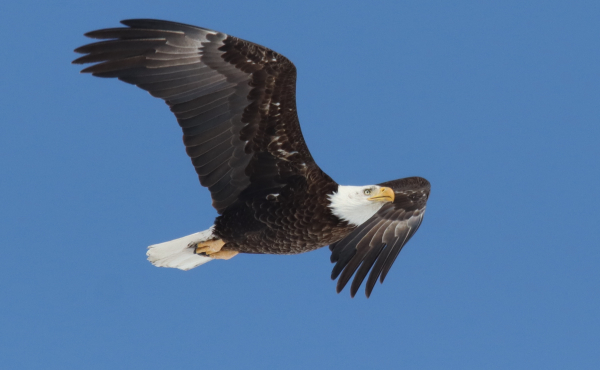

Not wanting to scare the eagle from its food source, I slipped into position into a turnoff a safe distance away, feeling especially glad to see the eagle resume feeding. Sudden movement caught my eye as an exciting sideshow began above the roadkill restaurant. A pair of adult Bald Eagles flew in low from the south to begin an aerial display that included tandem flights mixed with dives and twists and turns, with a few flips included in which one eagle twisted onto its back in flight to reached up at the other with its open talons. It was a spectacular flight to witness, and I marveled at the opportunity to photograph a few key moments during the display flight.
At the apex of their flight the pair was almost a quarter-mile north, but they circled back in a return flight that passed almost directly overhead. At that point I needed to focus on just one of the eagles, which provided some especially nice flight images as it passed by. At the same time, the pair’s overhead flight disturbed the feeding eagle, and as if to best the displaying pair as a photo subject, that grand eagle provided a surprise photo flight by circling low before me in ever-closer circles that allowed me to document a whole range of flight positions – Hooray!
The eagle alighted on a nearby hilltop, which made me start my engine and wave a thank you to the obliging eagles as I left with the hope my absence would ease the eagle’s attention so it would return to feed again. While continuing my drive, I was thrilled and thought this must be my introduction to all the excitement to come as these first migration breakthrough birds WoWed me on a sunny Sunday.
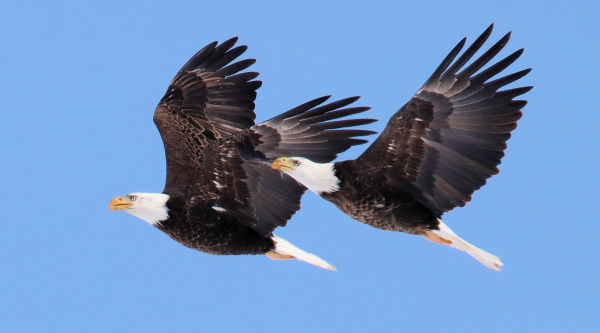
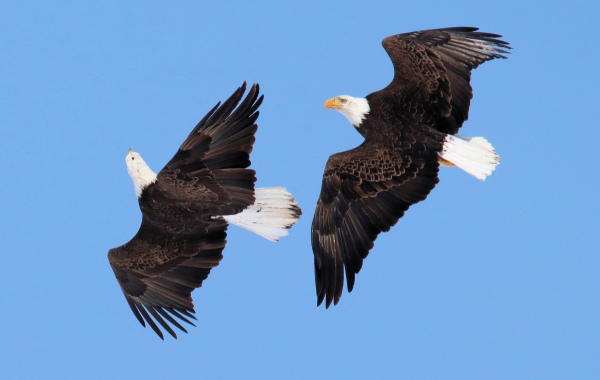
Roadside Feeding Action
Bald Eagles can be fierce predators, able to capture a variety of animals, ranging from large fish to muskrats, turtles, ducks, geese and other like-sized prey; but an interesting insight into Bald Eagle behavior among the earliest migrants north is that they often must take advantage of winter-killed animals, which includes roadkills. Often these animals are winter-frozen, making them a preserved food source as long as coyotes don’t find them first.
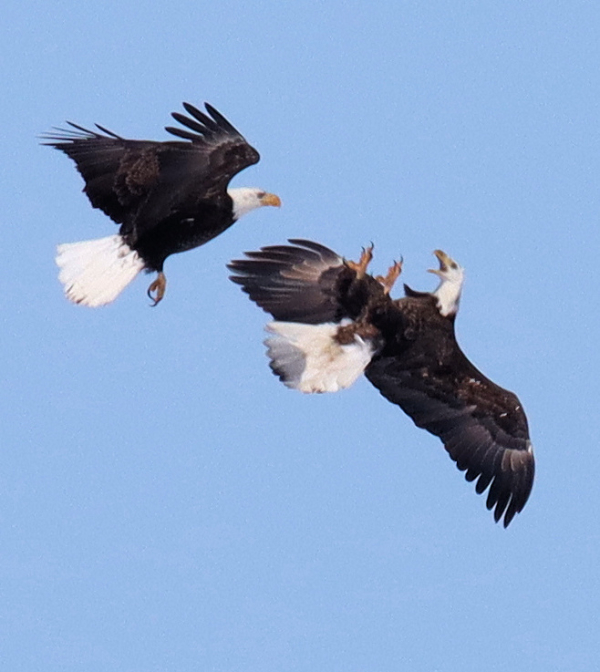
Twice the male broke away to gain elevation then dived toward the female; as he approached she flipped over to show her open talons to the approaching male – all part of the impressive flight display (600mm telephoto, f-8 aperture, 1/4000 shutter speed, ISO 400).
|
Only rarely have I had an opportunity to photograph eagles at these frozen food cafes before, but as more eagles have been crossing the border between the Dakotas this year I’ve already photographed eagles feeding at roadkills 5 times to date, 4 times in the past 5 days – twice Sunday and once each Wednesday and Thursday – and 2 of these feeding episodes provided exceptional photographs of Bald Eagles.
As with any bird photography there are a few simple things to keep in mind: First, try your best not to scare feeding birds from their food source. Sometimes this is not an option, as any vehicle that passes by will send the eagles on a flight that usually results in their return after the vehicle passes. If you happen upon eagles with food, find a location where you can photograph without flushing them – a position where the sun is behind you with the bird in front of you. Stay in your vehicle to reduce the chance of flushing the eagles; turn off your engine, steady your camera lens against the window frame or on top of a slightly raised window, and hold your breath any mement you are taking a photo.
Aside from that, stay aware of your surroundings; another eagle may fly in to join the feast, or a crow or raven might try to join in; maybe even a coyote or fox could approach the food source. If you are fairly close, don’t stay too long; take your photos and bid the birds a thank you. But if an eagle appears to be feeding in a relaxed manner, it might be worthwhile to spend a little extra time to see if another animal arrives, or if the eagle takes flight after eating its fill.
Herein I wanted to share with you my good fortune, and what has become a bit of a bird photography theme for me during the past 10 days. It’s not the norm here, but with the combination of a tremendous winter snowfall and very late spring thaw – yet to come – it has been interesting to see how early Bald Eagles are coping with finding food resources. In the meantime, I’m making the most of the photo opportunities they have provided. Hope your spring bird photography is off to a fine start!
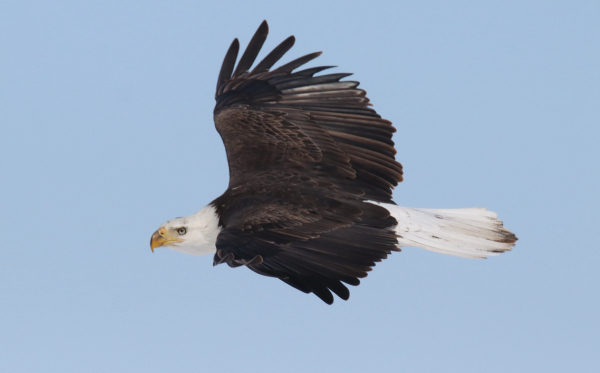
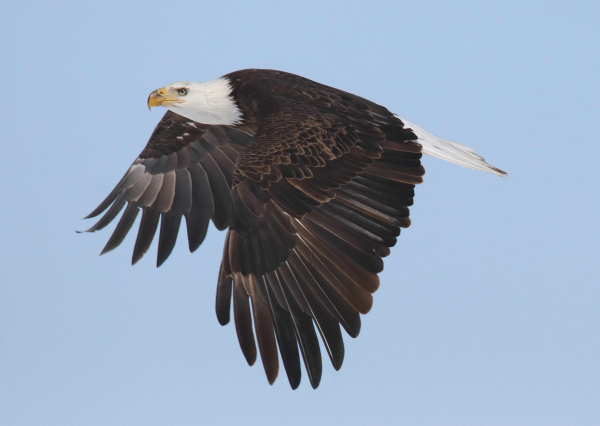
Article and photographs by Paul Konrad
Share your bird photos and birding experiences at editorstbw2@gmail.com